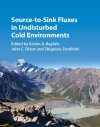About this book
Amplified climate change and ecological sensitivity of polar and cold climate environments are key global environment issues. Understanding how projected climate change will alter surface environments in these regions is only possible when present day source-to-sink fluxes can be quantified. Source-to-Sink-Fluxes in Undisturbed Cold Environments provides the first global synthesis and integrated analysis of environmental drivers and quantitative rates of solute and sedimentary fluxes in cold environments, and the likely impact of projected climate change. The focus on largely undisturbed cold environments allows ongoing climate change effects to be detected and, moreover, distinguished from anthropogenic impacts. A novel approach for co-ordinated and integrative process geomorphic research is introduced to enable better comparison between studies. This highly topical and multidisciplinary book, which includes case studies covering Arctic, Antarctic, and alpine environments, will be of interest to graduate students and researchers in the fields of geomorphology, sedimentology and global environmental change.
Contents
Preface
Part I. Solute and Sedimentary Fluxes and Budgets in Changing Cold Climate Environments:
1. Introduction to the theme
2. The IAG/AIG SEDIBUD (Sediment Budgets in Cold Environments) programme
Part II. Climate Change in Cold Environments and General Implications for Contemporary Solute and Sedimentary Fluxes:
3. The changing cryosphere – implications for solute and sedimentary fluxes in cold climate environments
4. Changes in vegetation cover and implications for solute and sedimentary fluxes in cold climate environments
Part III. Solute and Sedimentary Fluxes in Sub-Arctic and Arctic Environments:
5. Contemporary solute and sedimentary fluxes in Arctic and Sub-Arctic environments: current knowledge
6. The use of dendrogeomorphology to recognize the spatio-temporal distribution of snow avalanches in northern Iceland – case studies from Dalsmynni, Ljósavatnsskarð and Fnjóskadalur
7. A contemporary assessment of sediment and solute transfers in Kärkevagge, Swedish Lapland
8. Hillslope processes and related sediment fluxes on a fine-grained scree slope of Eastern Canada
9. Sediment and solute transport from Greenland
10. Measurements of bedload flux in a high Arctic environment
11. Solute and particulate fluxes in catchments in Spitsbergen
12. Sediment and solute fluxes at the Igarka field site, Russian Sub-Arctic
13. Variability and controls of solute and sedimentary fluxes in Sub-Arctic and Arctic environments
Part IV. Solute and Sedimentary Fluxes in Sub-Antarctic and Antarctic Environments:
14. Environmental impact on contemporary solute and sedimentary fluxes in Antarctica: current knowledge
15. Solute and solid cascade system in the Antarctic oases
16. Environmental controls on sediment composition and particle fluxes over the Antarctic continental shelf
17. Solute and sedimentary fluxes on King George Island
18. Dynamics of the Antarctica ice cap
19. Solute and sediment fluxes from rivers and streams in the McMurdo Dry Valleys, Antarctica
Part V. Solute and Sedimentary Fluxes in Alpine/Mountain Environments:
20. Chemical denudation in partly glacierized mountain catchments of the fjord landscape in western Norway: contemporary rates, environmental controls and possible effects of climate change
21. Sediment delivery from headwater slope systems and relief development in steep mountain valleys in western Norway
22. Suspended sediment dynamics in the proglacial zone of the rapidly retreating Castle Creek Glacier, British Columbia, Canada
23. Sedimentary fluxes in Himalaya
24. Rates of slope and channel processes in the Reintal Valley, Bavarian Alps
25. Comparative analysis of sediment routing in two different alpine catchments
26. Controls and variability of solute and sedimentary fluxes in alpine/mountain environments
Part VI. Quantitative Analysis of Solute and Sedimentary Fluxes in Cold Climate Environments:
27. Environmental drivers, spatial variability and rates of chemical and mechanical fluvial denudation in selected glacierized and non-glacierized cold climate catchment geosystems: from coordinated field data generation to integration and modeling
28. Summary of key findings from Arctic, Antarctic and mountain environments
Index
Customer Reviews
Biography
Achim A. Beylich is a senior research scientist at the Geological Survey of Norway, Trondheim. He has also held an Associate Professor position at the Norwegian University of Science and Technology (NTNU) in Trondheim. Dr Beylich has more than 20 years of experience in field- and laboratory-based quantitative process geomorphic research in cold climate environments, in Iceland, Sweden, Finland, Norway, Canada, Russia, and the German Alps. He initiated the SEDIBUD (Sediment Budgets in Cold Environments) working group of the International Association of Geomorphologists (IAG), which he has chaired and led since 2005.
John C. Dixon is Professor of Geosciences at the University of Arkansas, USA. His principal research interests lie in the area of landscape evolution in cold and warm dry climates, and in particular, the role of chemical processes in soil and regolith formation. Professor Dixon has worked in Swedish Lapland, Alaska, the Rocky Mountains, southern Australia and southern Norway, and has published over 100 refereed journal articles and book chapters.
Zbigniew Zwoliński is a Professor at the Institute of Geoecology and Geoinformation at Adam Mickiewicz University, Poland. His main research interests include fluvial geomorphology and sedimentology, GIScience, geodiversity and global changes. He conducts research on desert landforms as well as landforms in tropical and polar regions, and has participated in many summer expeditions to the High Arctic (Spitsbergen, Iceland) and Antarctica (King George Island).






















![Stratotype Stampien [French]](http://mediacdn.nhbs.com/jackets/jackets_resizer_medium/20/203488.jpg?height=150&width=102)












